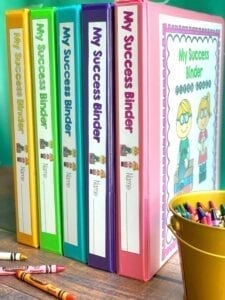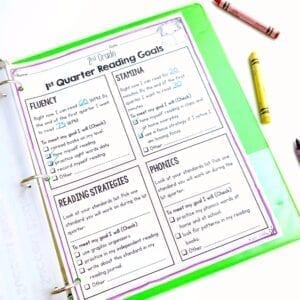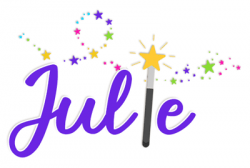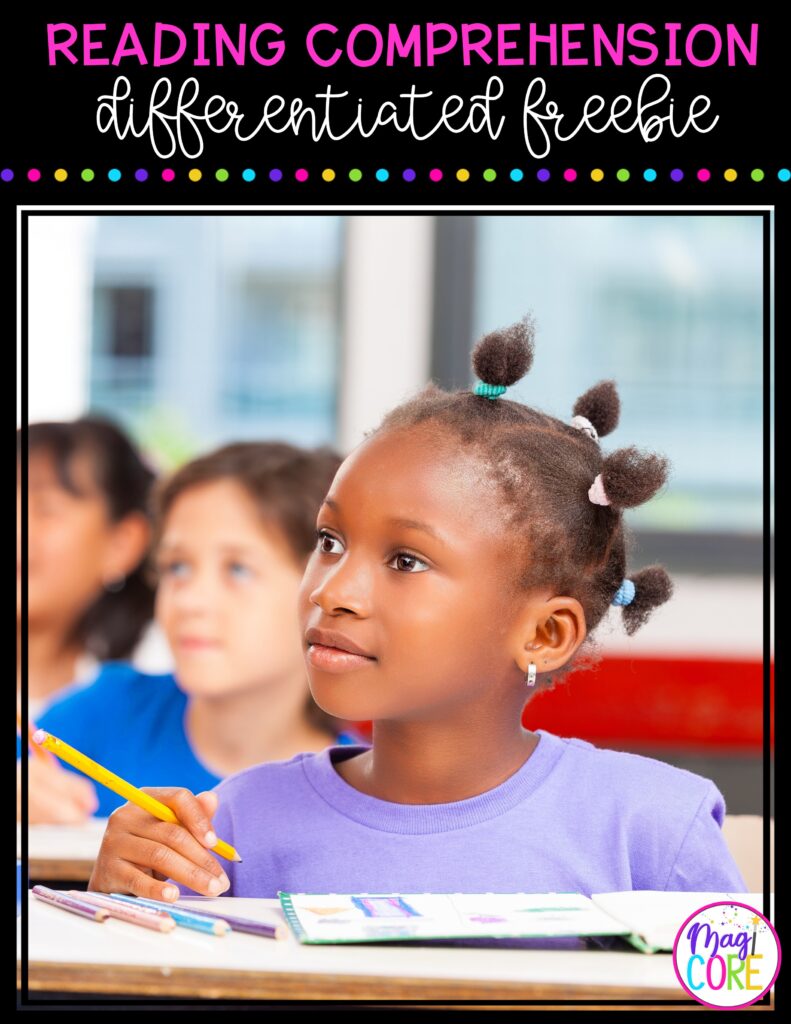Do you want a way to help students become responsible for their learning? Student success data notebooks are the key to teaching students to track their progress and help them have ownership of their learning; however, the thought of implementing data notebooks can be overwhelming.

I first heard about student data notebooks from a partner teacher when I was teaching 5th grade. My partner teacher had used student data notebooks and wanted to implement them after the year started. I didn’t have much notice. Not surprisingly, I wasn’t enthused about the idea. I didn’t want to put in the effort to change my whole system. Needless to say, our data binders that year were a mess. With students changing classes, they constantly forgot their binders and lost pages. I did not use them with consistency. Having something this huge “thrown” at me did not make me buy into the idea. But I knew there was value in the practice. I saw how my coworker used her data binders with fidelity. Our students really took charge of their goals and progress in her class.
I decided to spend some time that summer reading and researching more about student data notebooks. I looked at various examples and compiled the forms I thought I would need for my 2nd-grade class. It just made sense for me to teach my students how to track their own success, rather than try to keep up with it all myself.
Implementing student data notebooks with fidelity was LIFE CHANGING in my classroom. It was really one of the BEST teaching decisions I ever made. The data notebooks transformed my students into being motivated goal seekers. Students learned that they hold the keys to their own success.
If you are thinking of getting started with student-led data tracking, my biggest tip is to START SLOW! Pick a few of the most important things you would like your students to track and start there. It is easy to add more things later on. If you get in over your head before you start, you will be less likely to follow through at all. While you should certainly pick what is most important to you and your classroom, these are the things I chose to focus on first.

I quickly realized my students needed more guidance. Splitting their goals into four different reading sections helped. Students made a goal for fluency, stamina, reading strategies, and phonics. I created a goal sheet where students could write the specifics for each goal and check of strategies they could use to meet their goal. I did a similar form for math including fluency and math strategies.
These goal sheets can be found in my student data notebooks for 1st grade, 2nd grade, 3rd grade, 4th grade and 5th grade.
Before using student data notebooks, I had pages of student conferences for each child but rarely did anything with them. They were ineffective for me and the student because the forms were sitting in my huge binder.
I created a student/teacher conference form that mirrored our quarterly goal sheets. Each conference, I would meet with each student and go through each area of focus.
For fluency, I tested students’ WPM, asked them to summarize what they read for me, and asked them clarifying questions. Based on this data, the student and I were able to come up with fluency and reading strategy goals. Students would then graph their fluency progress in their data notebook.
We also discussed their stamina (I did monthly class stamina checks) and phonics goals (based on their weekly phonics assessments and small groups.) Students then kept the conference notes in THEIR data notebook (not mine). After all, these are their personal goals they are creating to help themselves.
During the conference, I also tracked their reading level on a graph in my teacher data notebook.
Graphing progress has been POWERFUL for my students. They LOVE to see the visual reflecting their growth. It really motivates them to improve their reading skills. If their line isn’t going up (or goes down), students make the connection that they need to focus on their goals.
(On a side note, I feel strongly that we don’t want to create misconceptions for children. I do have students do a line graph for their reading level and fluency. Line graphs are not introduced in math until a much later grade, but this is the proper type of graph to use since we are showing change over time.)
These four things are a great starting point for student data notebooks. Once you and your students get the hang of these things, you can certainly add more data tracking. The more you use your data notebooks, the more independent students become with them. Here are some other aspects I added on later in the year when my students got the hang of things.
All of these forms and more can be found in my Teacher/ Student Data Tracking Binders. They are available for first grade, second grade, third grade, fourth grade, and fifth grade.
Conferences: Data notebooks are the main tool for student-led conferences with both teachers and parents. I already went over briefly how I used them to supplement student/teacher conferences. During parent conferences, I always began by having the student go over their goals and successes in their data binder with their parents.
This really makes parent conferences meaningful because parents can actually see their child’s progress through graphs and conference notes. It also helps parents understand the importance of developing students who are responsible and accountable for their own learning.
If you have an RTI or IEP meeting, there is much less prep for you, too! Just grab the student’s data notebook and you will have most of the information ready to go!
Daily Use: Students keep their data notebooks with them at their seat all day. (They take up space, but to use them with fidelity, they need to be right next to students at all times.)
Students should always have their data notebooks out during center work or independent reading. They need to have their goals right in front of them, because during independent reading time and center time, they are working on their goals. Don’t forget to hold students accountable for this. At the end of the reading and math block, I always choose a few students to share how they were working towards attaining their goal. If you’re not willing to use data notebooks throughout the day, then they will not be nearly as effective.
I created my Student and Teacher Data Notebook to help you easily implement data notebooks in your own classroom, without the hassle of creating them from scratch. My Student and Teacher Data Notebooks are available for first grade, second grade, third grade, fourth grade, and fifth grade. Visit my store to check out all of my resources.

We strive to create resources that empower teachers and transform student success. We create skill-focused resources that promote critical thinking, enhance student engagement, and incorporate diversity. Our goal is to develop the tools teachers need to reach their students and foster a lifetime of learning.


5 Responses
Where is kindergarten?
Hi Melinda,
Unfortunately, I do not have kindergarten at this time.
Julie
love the binders
Thanks, Shelly! Glad to hear these help!